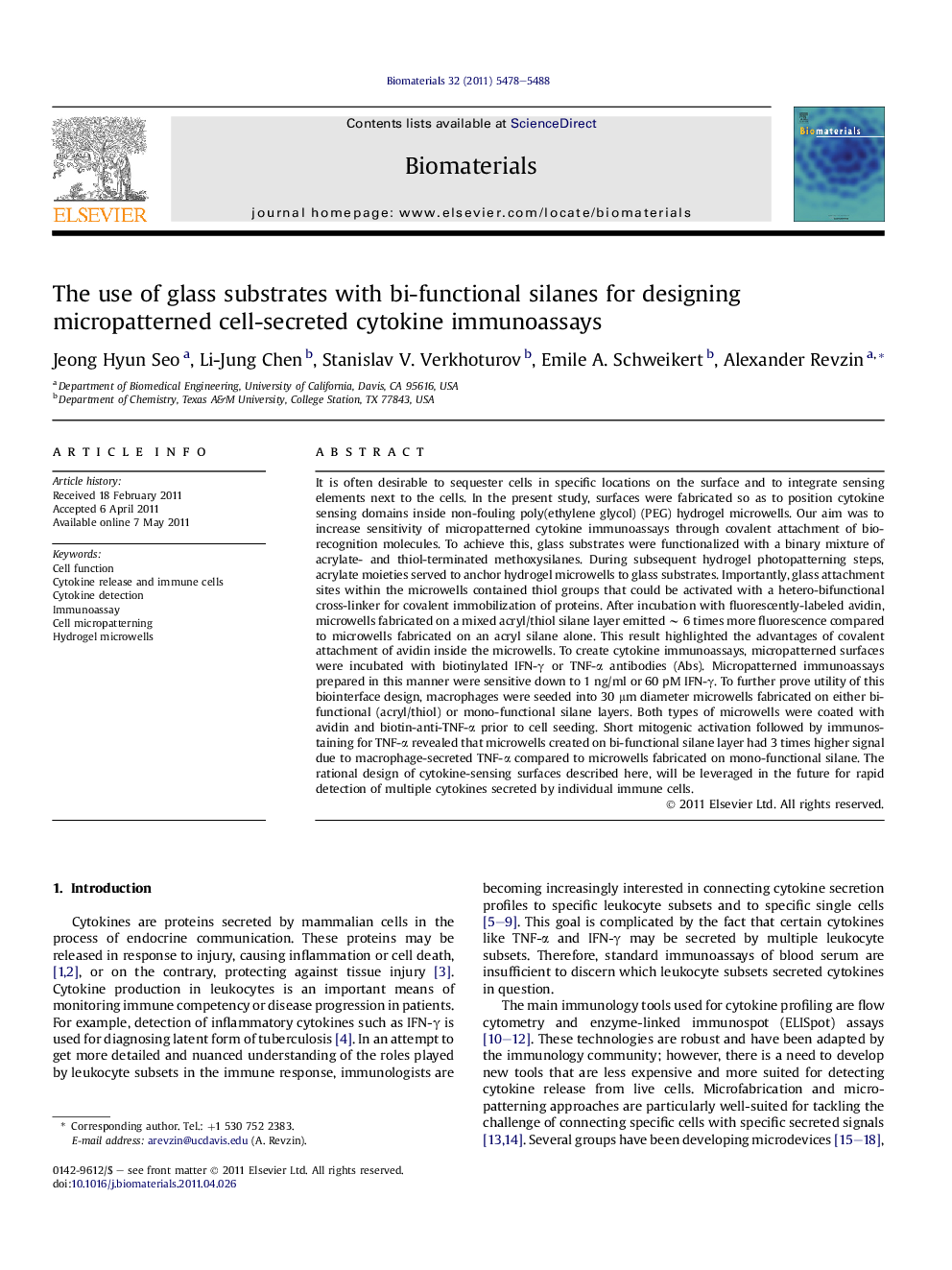| کد مقاله | کد نشریه | سال انتشار | مقاله انگلیسی | نسخه تمام متن |
|---|---|---|---|---|
| 8216 | 581 | 2011 | 11 صفحه PDF | دانلود رایگان |

It is often desirable to sequester cells in specific locations on the surface and to integrate sensing elements next to the cells. In the present study, surfaces were fabricated so as to position cytokine sensing domains inside non-fouling poly(ethylene glycol) (PEG) hydrogel microwells. Our aim was to increase sensitivity of micropatterned cytokine immunoassays through covalent attachment of biorecognition molecules. To achieve this, glass substrates were functionalized with a binary mixture of acrylate- and thiol-terminated methoxysilanes. During subsequent hydrogel photopatterning steps, acrylate moieties served to anchor hydrogel microwells to glass substrates. Importantly, glass attachment sites within the microwells contained thiol groups that could be activated with a hetero-bifunctional cross-linker for covalent immobilization of proteins. After incubation with fluorescently-labeled avidin, microwells fabricated on a mixed acryl/thiol silane layer emitted ∼ 6 times more fluorescence compared to microwells fabricated on an acryl silane alone. This result highlighted the advantages of covalent attachment of avidin inside the microwells. To create cytokine immunoassays, micropatterned surfaces were incubated with biotinylated IFN-γ or TNF-α antibodies (Abs). Micropatterned immunoassays prepared in this manner were sensitive down to 1 ng/ml or 60 pM IFN-γ. To further prove utility of this biointerface design, macrophages were seeded into 30 μm diameter microwells fabricated on either bi-functional (acryl/thiol) or mono-functional silane layers. Both types of microwells were coated with avidin and biotin-anti-TNF-α prior to cell seeding. Short mitogenic activation followed by immunostaining for TNF-α revealed that microwells created on bi-functional silane layer had 3 times higher signal due to macrophage-secreted TNF-α compared to microwells fabricated on mono-functional silane. The rational design of cytokine-sensing surfaces described here, will be leveraged in the future for rapid detection of multiple cytokines secreted by individual immune cells.
Journal: Biomaterials - Volume 32, Issue 23, August 2011, Pages 5478–5488